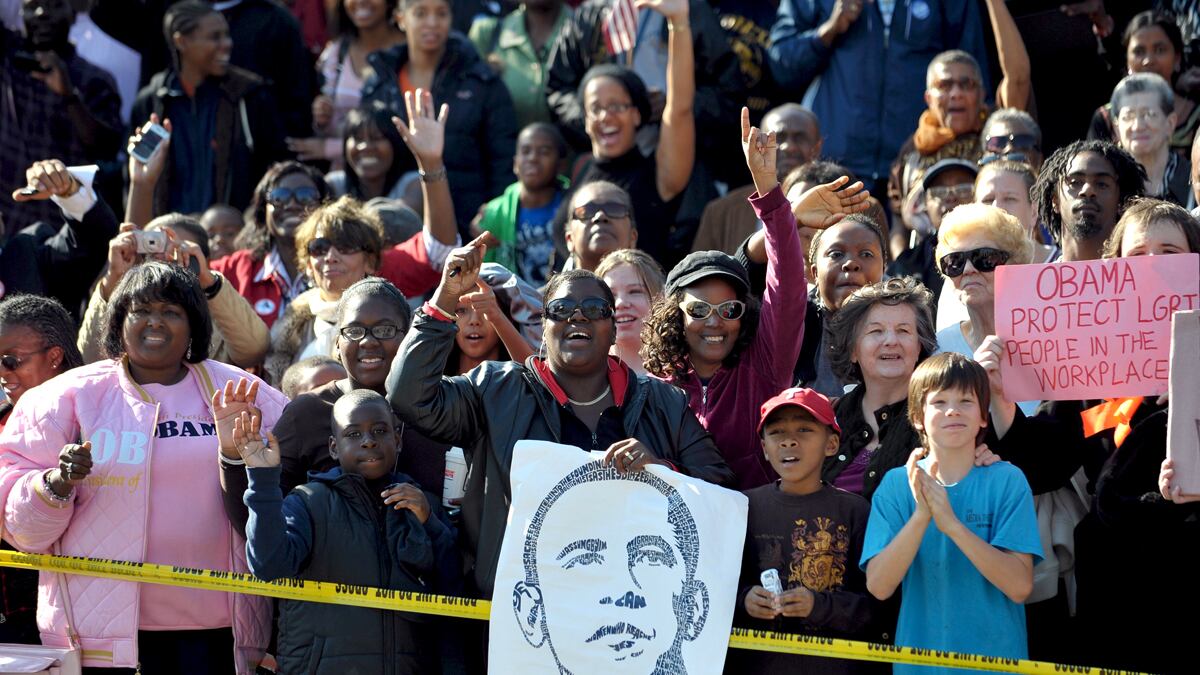Barack Obama is winning the Rust Belt back. The overwhelming repeal in Ohio of Governor John Kasich’s anti-labor bill from last year shows that the GOP has gone way, way too far—too far for Democrats, obviously, but also for independents. It shows the potential for something else, too: the populist message can stick. “Class warfare” can work. It can take hold even with the people who allegedly despise our Kenyan leader the most: the white working class. And if this turns out to be right, then the Washington conventional wisdom will be proven as wrong as it’s been since 1998, when the Cokie Roberts caucus convinced itself that the American people wanted to throw Bill Clinton out of the White House over Monica.
Ohio’s Question 2 lost 61 to 39 percent. I was on a press conference call yesterday with AFL-CIO President Rich Trumka and others, and pollster Guy Molyneaux ran through some numbers from polling that the union did. Fully 57 percent of independents backed the repeal. In 2010, 59 percent of independents voted for Kasich. So that’s a huge switch. The white working class, which Kasich won by 14 points in 2010, backed repeal by the very 61 percent that it took overall. This was a pasting, as Kasich acknowledged.
It’s possible for liberals and Obama people to read too much into this. Obviously, Obama is not going to win anywhere near 61 percent of the vote in Ohio next year. Lots of people voted for this repeal—cops, firefighters, others—who are likely to be Republican voters next year. And, since the symbolic anti-health-care-law referendum passed by a similar margin, it’s obvious that lots of people cast the liberal vote on one initiative (to protect collective bargaining) and the conservative vote on the other (to express their opposition to health-care reform). Finally, Obama’s own approval rating in the state is pretty bad, at 41 percent.
But the larger context in which this vote took place is important, too. And that context is Operation Wall Street, income inequality, Republicans in Congress killing the jobs bill piece by piece, Obama finally getting some blood flowing through those veins again instead of water. People have started to care about class issues, and it’s pretty clear what they think: The Republican Party isn’t representing them (unless they happen to live in a household with an income of at least $368,000 a year). In the new NBC/Wall Street Journal poll, 76 percent agreed that “the current economic structure of the country is out of balance and favors a small proportion of the rich over the rest of the country.”

What this means for next year is twofold. First, it suggests that Davids Plouffe and Axelrod should work the Rust Belt. Plouffe in particular has been signaling a strategy that would put more emphasis on Virginia and Colorado and North Carolina (where the convention is being held) at the expense of states like Ohio, Wisconsin, and Michigan. But the way Democrats and majorities of independents are acting in those Rust Belt states now, they’re looking more like states Obama can hold. You may have seen the Ohio poll in which, despite his low approval rating, Obama beats all the Republicans handily—Mitt Romney by nine points, 50 to 41, and the others by double digits.
Which leads to the second possible consequence for next year. The conventional wisdom laid down by the geniuses who lay down the conventional wisdom is that Obama—any Democratic president, or any Democrat, really—can either play to the base or the middle but can’t possibly reach both. Oh, he can compartmentalize and triangulate a little, throwing this scrap to the base, that bone to the middle. But he fundamentally can’t please both.
In fairness, there have been times in the past when that was true. The base didn’t want NAFTA in the first Clinton term, and the center did. So Clinton chose. One among many possible examples. But we’re in a different historical circumstance now. Now, base and center, or certainly enough of the center, agree that something has to be done to make American society more equitable and just. I think of the way the 1992 election came to be about health care—an “issue palette,” as they say, that automatically favors Democrats. If the White House plays its cards right, 2012 could be about inequality. The Democrat can’t possibly lose an election about inequality.
That’s a bigger “if” than I’d prefer—the White House didn’t see this back in the summer, when Plouffe and others thought Obama had to let the GOP make him look like a 98-pound weakling for independents to like him. That was Washington-think gone mad. But there are signs that the White House is getting it now. Obama did sign those trade deals with South Korea, Panama, and Colombia—but he signed them in private. Take that, Bill Daley.
Oh and by the way: If Romney is going to be the Republican standard bearer, Alec MacGillis of The New Republic wondered the other day, is this really the right time for a nominee who’s worth $250 million and is going to be walking around talking about lower taxes on everyone, including the rich, and who presumably pays at the 15 percent rate, since most of his income is from capital gains and not compensation?
A lot of this will depend on events, starting with the unemployment rate. But what the Ohio result shows is a way to unite liberals and moderates, Democrats and independents, behind one message that both want to hear. That hasn’t happened much in recent American history. The White House had best be alert to it.





